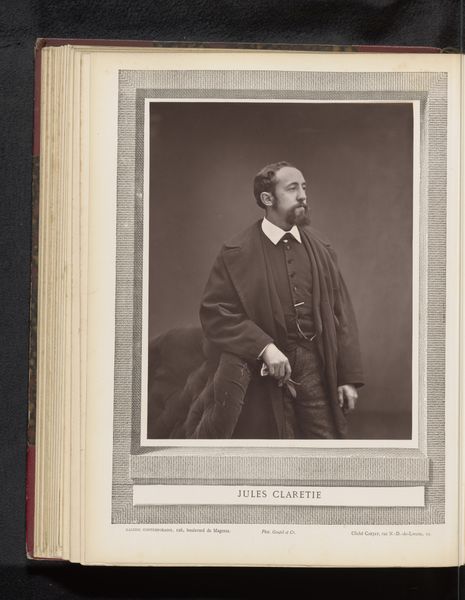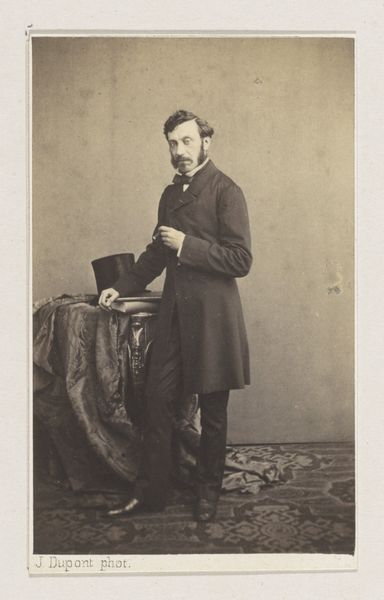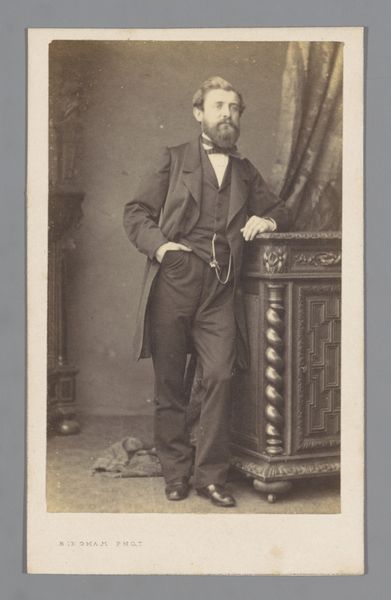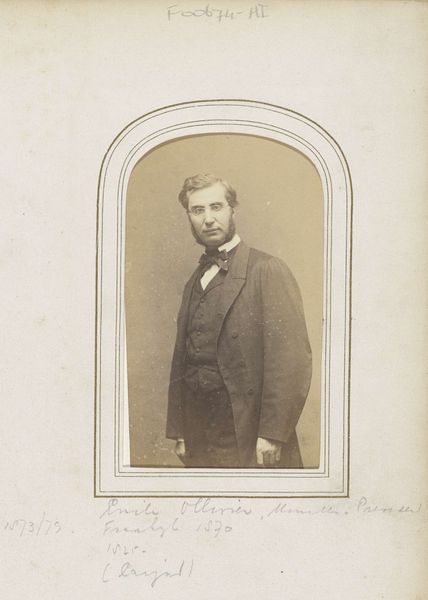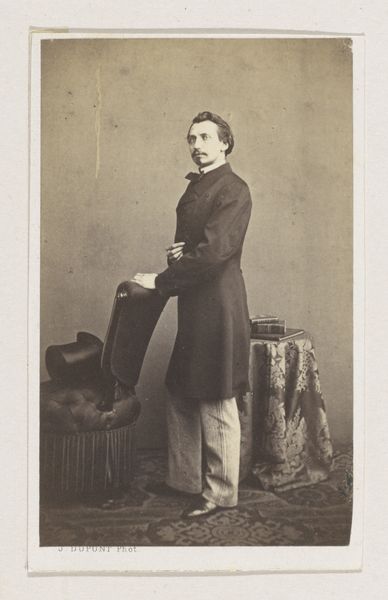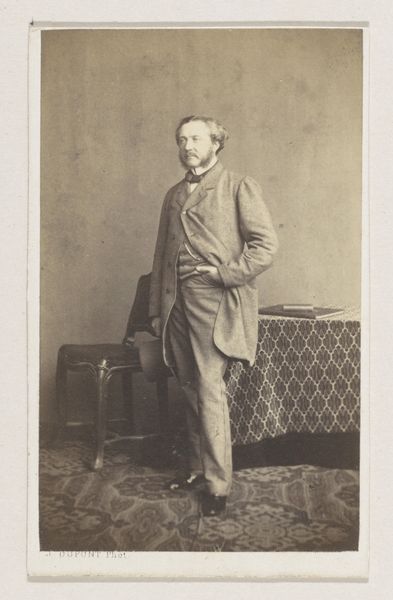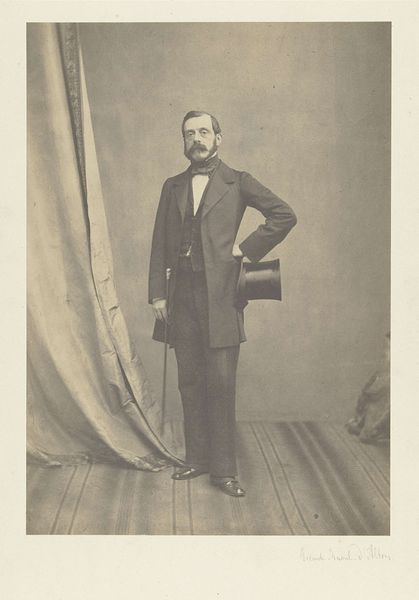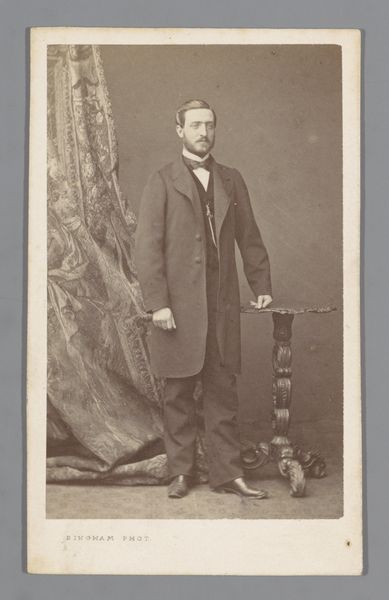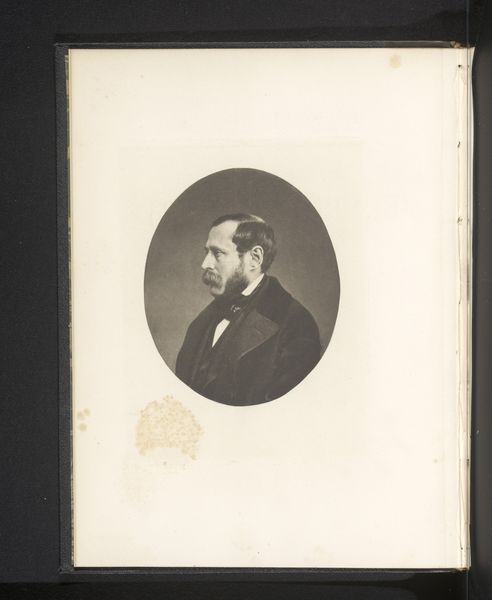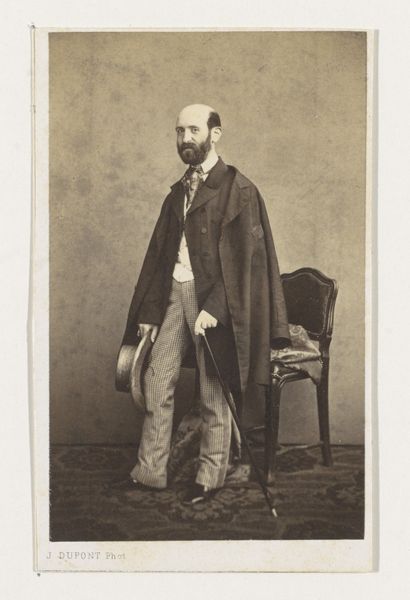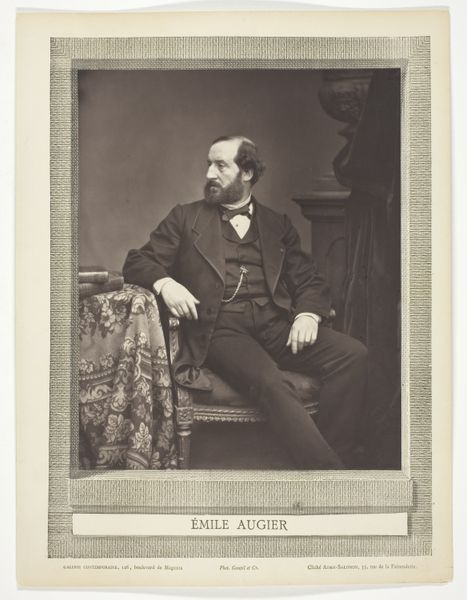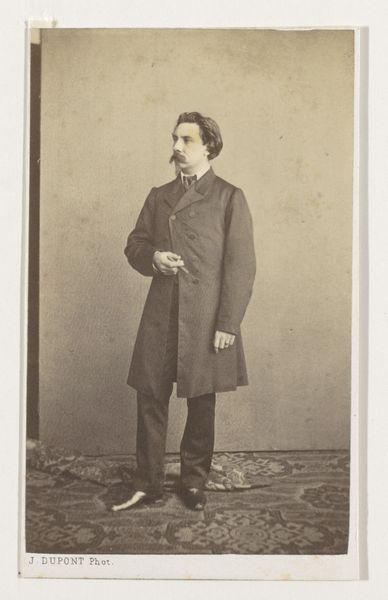
daguerreotype, paper, photography
#
portrait
#
16_19th-century
#
daguerreotype
#
paper
#
archive photography
#
photography
#
france
#
19th century
#
realism
Dimensions: 23 × 18 cm (image/paper); 34.1 × 26 cm (mount)
Copyright: Public Domain
Curator: Good day. We’re standing before a captivating portrait of Jules Claretie, a distinguished French literary figure, captured circa 1876 by the talented Étienne Carjat. It’s a daguerreotype, a photographic process rendering incredibly sharp detail. Editor: My goodness, the man exudes an aura of intense seriousness, or maybe even just a touch of weariness? The tones are sepia and brown, lending this wonderful archaic feel that almost puts you in that Parisian studio. Curator: Precisely! Carjat, deeply engaged with the Realist movement, avoided embellishment, which makes it a genuine peek into the late 19th century. Think about how carefully these images were styled, and even constructed; even an "unembellished" work involves choices. Editor: Oh, absolutely. The slightly averted gaze - could be aloofness or profound pensiveness; he is staring into the distance. The carefully positioned hand holding what I think is some kind of quill. I am sure, every element here speaks. Curator: Jules Claretie was an advocate for the theater; he even ran the Comédie Française towards the end of his life. Look closely at his dark suit. It's as if it prefigures the somber hues we associate with late 19th-century theater – all the intensity! – just before the curtain rises. Editor: It's more than a literal garment, of course, more a badge of professional distinction, like a painter's smock or an apothecary's coat, meant to signal dignity to the outside world. And you almost expect some prop for stage from his other hand. It could be an actor's trick, a stage designer. What a potent use of photographic medium to memorialize someone’s essence. Curator: Yes. But I also appreciate its stark honesty. It does remind us how images, at the end, construct and communicate identity, right? A carefully designed message preserved for all the history to appreciate it. Editor: What strikes me most is the emotional continuity it conveys, timeless themes that remain just as important today as in Carjat's France. Curator: Indeed. Thank you! It certainly provokes some thoughtful musings, doesn't it? Editor: Very true. On to the next intriguing revelation then!
Comments
No comments
Be the first to comment and join the conversation on the ultimate creative platform.
